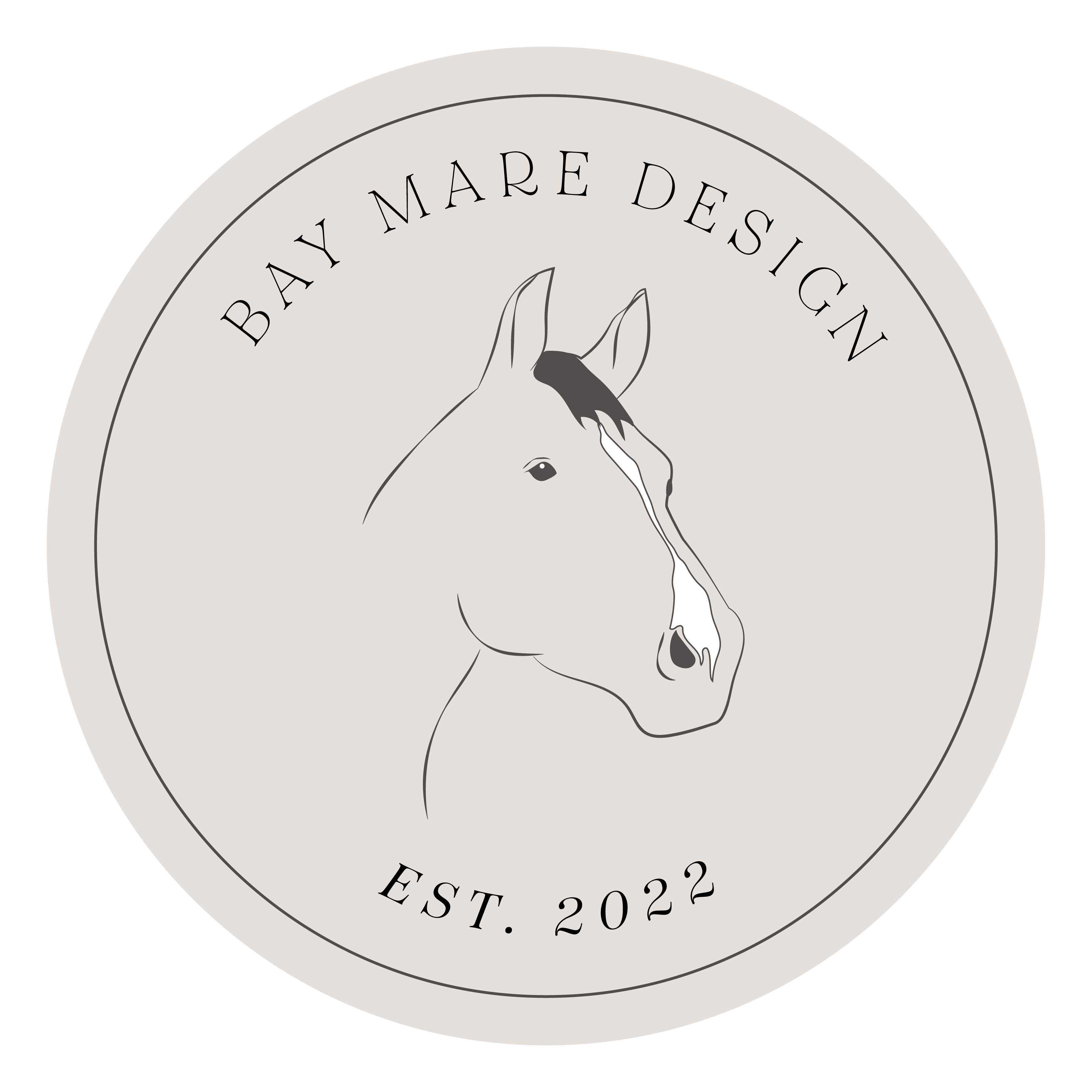In this blog post, I’m going to give you a run down of 6 things I think you’re probably going to want to avoid when designing your own equestrian brand. Some of them might be pretty obvious, and a few might be a little controversial, but overall – I hope you find them helpful. So let’s get into it!
Don’t design anything before researching your target audience.
It can be SO tempting to jump right in to designing a logo for your business (especially when you’re just getting started). You want to give yourself a fun look, after all. But here’s the thing: any logo built without some type of strategy or research won’t perform as good as one with the strategy behind it.
My #1 suggestions for people trying to design their own branding is to get to know their target audience first. At the very least you should understand their age range, location, likes/dislikes, and problems as they relate to your services. If you want to go the extra mile, you’ll learn about where they’re hanging out online, how they talk, what they’re attracted to visually, and what they value.
When you take all of these things into consideration, you really make sure that you’re giving your brand the proper foundation to be successful.
Don’t buy a pre-made logo from Etsy or use a stock Canva template.
Etsy is pretty great, right? There’s THOUSANDS of fun digital products to choose from, including logo designs. And the same thing goes for Canva. Why wouldn’t you want to save some cash and just go with one of those?
Here’s why: It’s not going to be unique.
Most of the sellers on Etsy will re-sell their logo designs over and over again (which is why they’re so inexpensive). And while that’s great for the seller, it’s not ideal for you. The purpose of a logo design is to help give your business a unique identity that clients and customers learn to recognize. If you’re choosing a logo that’s been seen over and over again, it’s not living up to it’s purpose.
Canva logos have the same problem – there’s just no way for them to be unique.
I completely understand that a custom brand or logo design isn’t in the budget for everyone, especially not when you’re just getting started. If this is the case, my suggestion is to go with a simple text based logo that looks clean and professional.
Don’t copy your branding from a competitor.
Imitation is the best form of flattery, right? And hey – if it’s working for them, it will work for you! Mmm.. not so much. Copying your branding from a competitor (think logo, colors, and font) is not only unethical, it can also get you into legal trouble.
It can also cause confusion with your audience. If it’s not super easy to differentiate your content between your competitors, it really doesn’t do you any favors.
Instead of trying to figure out the best way to imitate your competition, use their branding to figure out how you can stand out. There’s absolutely room for everyone, so take advantage of the opportunity to create something totally unique! Hone in on what makes you different from them (your offerings, your philosophy, etc.) and use those elements to craft a brand that belongs to you.
Don’t ask family members or friends for input.
Throughout my time designing, there’s one thing that clients almost always do: get input from their friends and family on designs. And while I completely understand the reason behind why this happens, I always caution against it (and here’s why).
Unless your friends and family members fall within your target audience, there’s no reason they should be attracted to your branding. Now, I believe that you should absolutely ask for feedback during any type of design phase. I just believe that you should make sure to ask the correct audience.
Don’t pick brand colors just because you like them.
There’s a lot that goes into picking colors. I know that sounds silly, but I’m serious. The color palette that you choose for your brand will have way more of an impact that you know. That’s why you should pick colors based on how they make your audience feel (not how they make you feel).
I mean, let’s think about it. How awkward would a hot pink and teal color palette look when used for a funeral home? (I know that’s super morbid, but it really gets my point across).
Spend some time researching colors and how they work together before choosing them to represent your brand.
Don’t go overboard with brand fonts.
I’m a big font fan. No, really. I think I have close to 1000 fonts in my Macbook’s library. And while I clearly haven’t had a reason to use them all, I love them the same. I know that plenty of you are font lovers too. As seen by all of the different one’s you’ve used on your website, print materials, and social media.
No, I’m not judging you. I’m just trying to tell you that there’s a better way! I’m a firm believer that when it comes to fonts in any kind of design, less is more. And the same is true for your brand fonts.
As a rule of thumb, you should limit the fonts you use for your brand to 2-3. And you should consistently use these fonts in all designs that you create or have created for your brand. This helps create consistency for your target audience while making your brand look more polished and put together.




